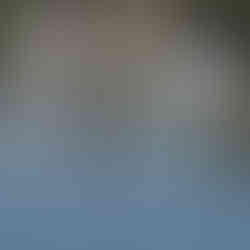Subject Size vs. Focal length
- Robin Nichols

- Sep 28, 2023
- 4 min read
Updated: Oct 1, 2023
I've been meaning to write about this for some time - possibly since the last photo safari tour I organized (to Botswana and South Africa). At that time I was leading a group of keen amateur photographers around Deception Valley, a vast private game reserve located in Botswana's Kalahari Desert. My job was to try and ensure that all the group had a great time and that they all got home with a portfolio of memorable images of Africa. To be honest, you'd be unlucky if you didn't return home with at least half a dozen classic shots that deserve to be proudly displayed in a frame over the mantlepiece. But it helps if there's someone on hand 18 hours a day to provide advice and support.
As with most photo tours I've organised, the first few days saw everyone going seriously trigger happy because, not surprisingly, everything was so alien to back home: new landscapes, abundant animal life, fantastic birds, wild vegetation, strange language. After a couple of trips out in the Land Cruisers, I suggested that everyone try to rein-in the barrage of images being snapped, reasoning that a lot of the wildlife being photographed was just too far away to look good onscreen - even for those using good telephoto lenses. I understand exactly why photographers go a bit shutter mad - I have to consciously try and stop myself from doing it too - one reason might be that there's a fear you might not see that animal/bird again, so you keep snapping. Just in case. The six shots below are good examples of 'getting the shot' and hoping that something will turn out. Inevitably, it won't, even if you are a whizz with software.
Most of us are well aware of how to manipulate images in Photoshop (an essential skill these days) but even so, cropping and enlarging very small areas of any scene (nearly) always results in poor quality images.

A Lilac-breasted Roller perched in a tree 100 metres off in the bush is nice to see but, once downloaded and displayed on a big screen, can look lost in the landscape. I usually suggest setting a distance limit for some subjects - if the subject is small (ie. a bird) and more than about 20-40 foot from us, my advice is not to bother. It rarely produces usable images and besides, it also fills up your card with stuff you'll never use.

A great wildlife shot is not necessarily only acceptable when the subject fills the frame. Some subjects look good full frame - birds especially, but it's also sometimes important to pull back from a full frame shot to include more of the environment. You could shoot a thousand close up, full frame photos of animals and birds and yet not capture any idea of what the country is really like. Context it almost more important than close-shooting. We get to see both the wildlife, as well as the environment in which it lives.


Although I dislike writing about "having the right gear", because equipment, especially wildlife gear, can end up costing a lot of money. Not everyone is interested in spending $500+ on a special telephoto lens for a 'big trip' because, quite rightly, they might think they'd only get to use it during their two-week adventure. That said, if you are sitting in a Land Cruiser with just a smartphone, don't be surprised if your semi-distant subjects look tiny in the frame!

On the up side, some telephoto lenses also have amazing close focussing characteristics - meaning if you are not shooting a distant subject, you can create a completely different look to your photos with extreme close-ups - while standing off at a distance. This means you can get an in-your-face result while maintaining a safe distance.

And of course, for all those situations when the wildlife comes too close to you - having a camera with a wide-angle lens or smartphone handy can pay dividends.
Many photographers get round the fact that their lens might not magnify the subject enough - so it's possible to fill the frame by cropping into the image in post. It's a relevant practice but you might run into quality issues if you crop in too much. Why? Cropping discards pixels, and if you lose pixels, you effectively reduce the size at which the file can be printed at best quality. For many this isn't a worry because so few print their work, preferring to upload to low resolution social media sites like Facebook or Instagram.
Resolution Benefits Clearly the higher the resolution of your camera, the more leeway you get when it comes to cutting bits off the frame (cropping). A subject shot using a 200mm lens, which is then cropped by 50%, effectively enlarges the subject so it looks as if were shot with a 400mm lens.
If you start with a 24Mb camera, such a crop still leaves you with a file that can be printed as big as A3. Many consumer cameras are now even higher resolutions (30Mb, 50Mb and even higher) allowing photographers to heavily crop their images while still retaining enough pixels to produce sharp, clear results.
Having said that, one answer would be to add pixels when cropping by using a feature called interpolation or up-sampling - it's a fantastic technology that's built into most photo software - and although results are never as good as having 'real' pixels in the file, up-sampling a photo is an excellent second best option.

















Comments